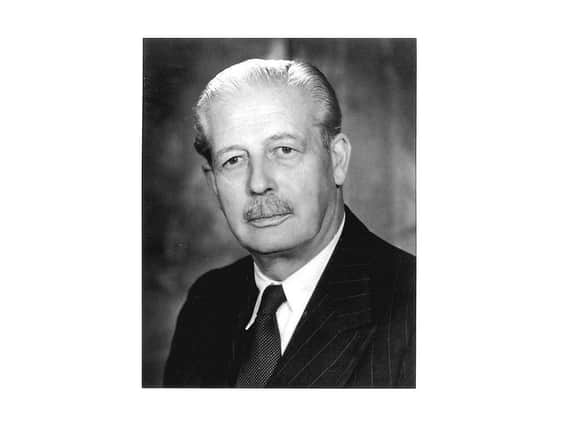The Lost Pandemic: How people coped during the 1957 Asian flu


In these time of Covid-19, it is useful to look back on previous pandemics. Alex Harrold is head of the History Society at Warwick School and is getting ready to start university. Here is his article on what people have described as the ‘forgotten pandemic’ – the 1957 Asian flu pandemic. The article also compares 1957 with 2020, comparing Harold Macmillan and Boris Johnson.
If you want to criticise a Prime Minister for his sluggish reaction to a new virus emerging from China, look no further than Harold Macmillan.
Advertisement
Hide AdAdvertisement
Hide AdIn the summer of 1957, Asian flu arrived in Britain and would eventually lead to 33,000 deaths. Globally, two million would die.
And yet this pandemic has been lost to history. Inspecting the work of recent historians on 20th century Britain, it is only David Kynaston who mentions the Asian flu, albeit laconically, as ‘an epidemic carrying chesty complications’.
Macmillan, just like the historians, was not fazed by it. In fact, he only heard about the deadly virus after reading about it in a newspaper.
So how did his government react? In comparison to 2020, there was no lockdown. To undermine post-war growth, and his own, ‘You’ve never had it so good’ catchphrase would have been politically risky.
Advertisement
Hide AdAdvertisement
Hide AdThe laissez-faire response – even though some schools experienced above 50 per cent absence rates at one time or another – was reflective of Britain in the 1950s. With 12,000 Londoners having died during the Great Smog of 1952, the public had become inured to deaths we now see as avoidable.
Other viruses such as measles and polio killed hundreds, smoking led to thousands more, and even the memory of the war had normalised the large-scale loss of loved ones.
A different social contract in Britain during the fifties played a part in the limited government response, too. With the NHS being less than a decade old when the Asian flu pandemic hit, people did not feel as entitled to free healthcare. Some of those who were acutely ill remained at home with aspirin and cold sponges instead of going to hospital. As a result, the NHS was not stretched to the point of needing a national lockdown to prevent capacity being breached.
As recorded in the National Archives of 1957, the cabinet decided to offer vaccines only to hospital staff and GPs. Enoch Powell, then financial secretary to the treasury, called for a wider vaccination programme but was isolated in this belief. This presents a piquant contrast to the level of government action and NHS care we have now come to expect. Matthew Hancock and the government have been criticised for doing too little rather than too much.
Advertisement
Hide AdAdvertisement
Hide AdBut while we have experienced a strict lockdown in 2020, was Macmillan right to follow a ‘business as usual’ approach? It was certainly cheaper. An extra £10 million worth of sickness benefit was paid out in 1957 which does not even approach the foothills of Rishi Sunak’s mountainous support package. The decision not to consider lockdown was also validated on account of the mortality rate of Asian flu being one tenth of Covid-19.
In the end, Macmillan was right to let the country continue as normal, but for the wrong reason. His wish not to sacrifice the post-war recovery when stagflation was itself posing an economic risk to the affluent society was politically understandable. But, difficult to say as it is, he made the right choice because the socio-economic cost of any lockdown would have been higher than the cost of 33,000 deaths.
Like Macmillan, Boris Johnson made the correct decision. In other words, the social cost of lockdown was less than the impact of hundreds of thousands of potential deaths and the overwhelming of the NHS.
We tell ourselves in 2020 that we will be ready for the next pandemic. But should we be quite so sure? In the autumn of 1957, John Corbett McDonald of the Public Health Laboratory Service wrote that: “Although we have had 40 years to prepare for what should be done in the event of an influenza pandemic, I think we have all been rushing around trying to improvise”.
Advertisement
Hide AdAdvertisement
Hide AdHe did not think that sufficient lessons had been learnt from the 1918 Spanish flu.
Looking back at the reaction to the 1957 Asian flu, we could say much the same. How little has been learnt from the 1957 pandemic is exemplified by how few people remember it. Even asking some of my more ‘experienced’ schoolteachers about it prompted only blank looks.
It was Macmillan’s relaxed response in 1957 which ensured that the pandemic had no long-lasting impact on daily life and therefore did not give cause to those who lived through the event to remember it. One thing we can say with certainty is that the extensive response in 2020 will form indelible memories...
There are many comparisons to be made between these two pandemics and the Prime Ministers who led Britain through them. Perhaps most striking would be that each of them would go on to catch the respective virus. While Johnson would be hospitalised, Macmillan writes in his diary on November 17 in 1957 that ‘I greatly fear pneumonia’.
Advertisement
Hide AdAdvertisement
Hide AdAs opposed to an intensive care unit, Macmillan prescribed himself a regular course of brandy. It was certainly style over substance with Macmillan, but such style.
When deciding on how to react to the pandemic, both Macmillan and Johnson exhibited their characteristic desire to please. By justifying their reaction on whether it was in the country’s best interests, they deflected blame from their personal actions. Johnson prefers to compare himself to Churchill, but here it is Macmillan who proves to be a more accurate likeness.